Finding Black history in Palm Beach County is daunting, but rewarding

The Black diaspora in Palm Beach County is a rich multicultural story that unfolds along the coast of this vast county and spreads west to communities of Lake Okeechobee with each area — whether it be Delray Beach, Belle Glade, West Palm Beach or Jupiter — serving as a repository to its own chapter in an inspiring, heartbreaking and all-too-often unknown saga.
This year’s Black History Month comes at a time when that very history is under assault; but to even find the local story one has to be intrepid.
“It's not an easy task,” said Debi Murray, chief curator of the Historical Society of Palm Beach County. “You really need to know people to know who to talk to.”
Black history: Nine Palm Beach County sites, venues with significance to Black community
Pieces can be found in dedicated museums such as the Richard and Pat Johnson Palm Beach County History Museum in West Palm Beach, the Spady Cultural Heritage Museum in Delray Beach and the Lawrence E. Will Museum in Belle Glade.
Some of it has no home. It is safeguarded by individuals, who hold precious pieces and are walking encyclopedias looking for a place to tell their stories and educate new generations.
Pearl City uncovered: Exploring Black Boca neighborhood's rich history through portraits
It can be found in historical markers throughout the county that residents walk and drive by every day. And it can be found online — some material reached with a few keystrokes, some of it hidden away and forgotten.
After advocates invested years to have Black history woven into the fabric of school lessons statewide, those efforts also appear to be under threat.
Books and lesson materials have fallen under new scrutiny as Gov. Ron DeSantis’ administration uses the year-old "Stop W.O.K.E. Act" to excise anything they deem to reference or support critical race theory (CRT), an academic concept that contends racism goes beyond the individual level and is in fact embedded in the legal systems and social policies of this country. (The W.O.K.E. acronym stands for "Wrong to our Kids and Employees.")
Last month, state officials canceled the teaching of AP African American Studies, stating it “lacks educational value and historical accuracy.”
Spady Cultural Heritage Museum
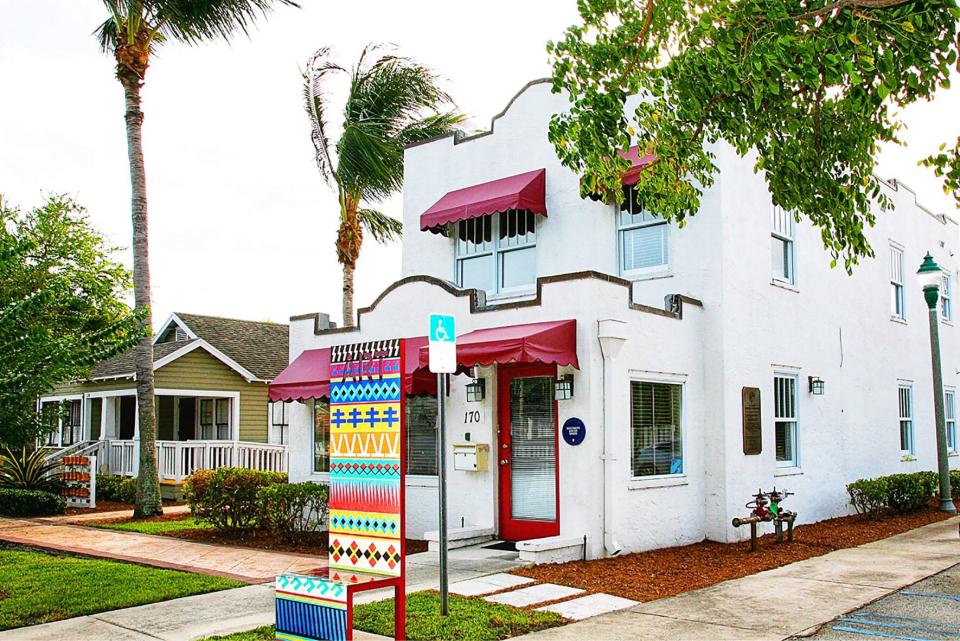
“The whole ‘woke’ movement, much of it is misinterpreted,” said Charlene Farrington, executive director at Spady Cultural Heritage Museum. “Much of it is Black people telling the story of Black people in America. And now again, we are being persecuted for that.”
For those who curate and present Black history in Palm Beach County, the effort to erase their past is hardly new. It goes back to when families were ripped apart during slavery and then later through massacres in Rosewood, Fla., Ocoee, Fla., Tulsa, Okla., Colfax, La., Wilmington. N.C. and Elaine, Ark.
Once slavery ended, Farrington said, Black people passed down stories orally. “It was kind of like almost a secret. We’re going to keep our history to ourselves. We don’t want anyone to come in and rip it away,” she said.
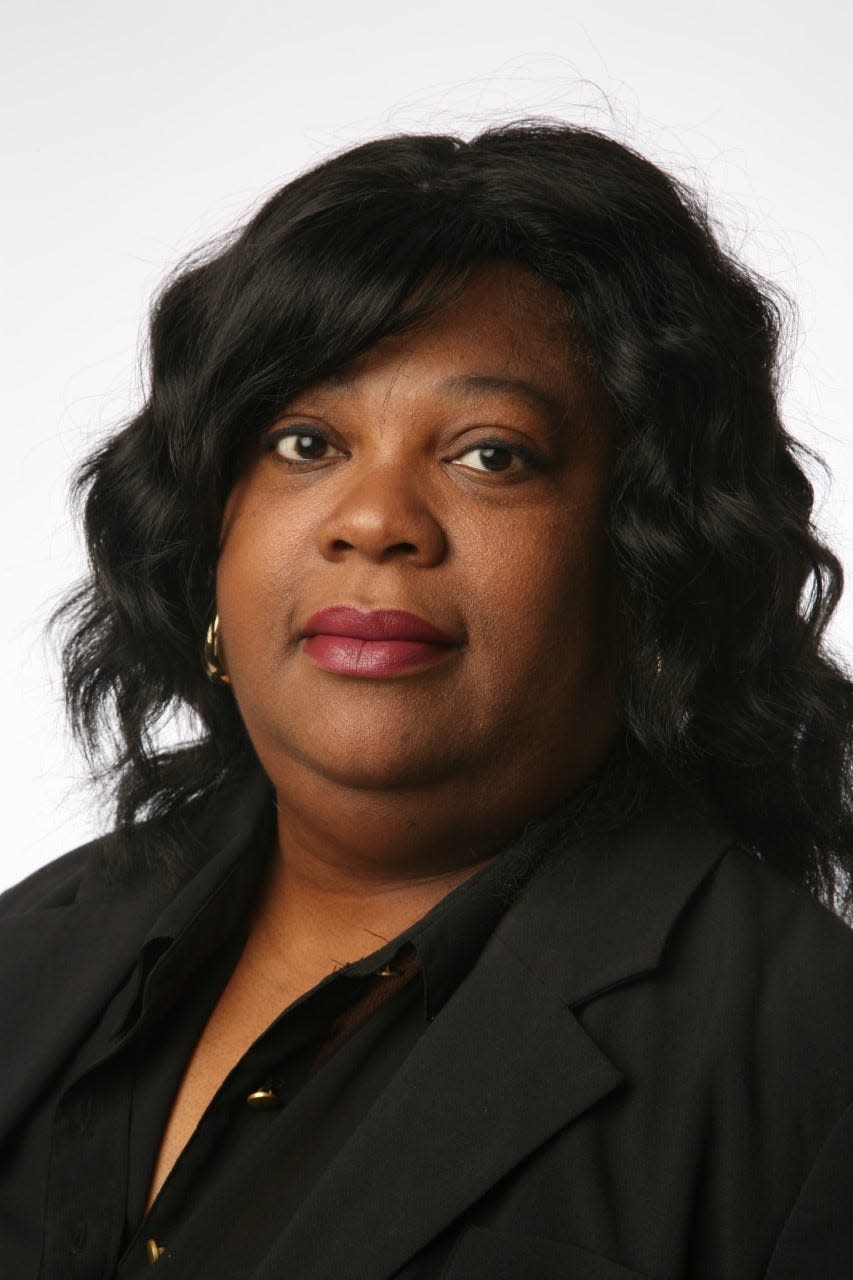
The Spady Museum, which opened in July 2001, is the only dedicated Black history museum and cultural center in Palm Beach County. Located at 170 NW 5th Ave. in Delray Beach, it is the former home of African American educator and community leader Solomon D. Spady.
Spady is on the list of Great Floridians. A student of George Washington Carver, he inspired children and encouraged them to go to college. He is not only a local Black icon but also an educational icon, showing the power of how just a single teacher can shape generations.
Farrington is the daughter of the museum’s co-founder, Vera Farrington. She and museum educator Edward Stintson are fonts of information about educator Spady and the rich history of Black people in Delray Beach.
The conversation with them for this article touched on inherent discrimination found in economic systems, the vestiges of segregation still seen today in Delray Beach, and how the Black story there is multicultural with rich Seminole and Bahamian influences.
Telling that story in today’s climate is difficult as ever. Farrington is involved in the Palm Beach County Remembrance Project, which aims to spark discussions on Black history and educate the public on two prominent lynchings of Black people in Delray Beach and West Palm Beach.
Just getting the word out for a student essay contest this school year proved to be nearly impossible.
Farrington said the Palm Beach County School District would not approve a flier seeking essays describing a historical event involving racial injustice, a contest sponsored by the Palm Beach County Community Remembrance Project.
“We couldn't get the flier approved by the school district to send out to the children, because the district is very, very cautious about anything that might be interpreted as — I don't even know what to call it — woke,” Farrington said.
The Palm Beach County School District did not return requests for comment.
For Black History Month, the Spady Cultural Heritage Museum will have an exhibit about Black fraternities and sororities, displaying outfits and other artifacts from the Alpha Kappa Alpha. Farrington says when Black people started attending traditional white-established colleges, they weren’t allowed in the existing clubs.
“So they created their own,” she said. “And the clubs basically are on college campuses for coeds to get together to support each other through school.”
Old Roosevelt High School
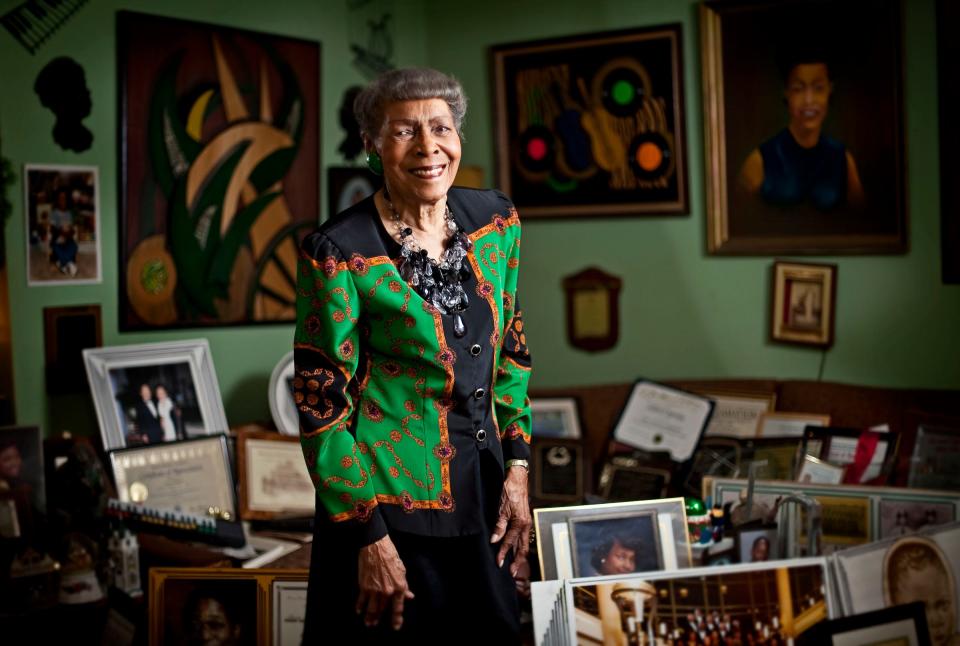
Debbye Raing says education is the foundation of much of Black history in Palm Beach County. Black families put education front and center even before there were schools their children were allowed to attend.
The former teacher is one of a cadre of individuals who are safeguarding some of that history until a permanent archive can be established — with a promise that it will be located at the former Roosevelt High School once it is renovated.
“They had open-air schools, in someone's backyard. While the parents went to work, you had a lot of people, older people who didn't work who could teach these children,” said Raing, who graduated from Roosevelt.
“And so you had these open-air schools all around the community, different areas where they were teaching them until they could get to where they need it.”
These schools, sometimes held on the grounds of churches, paved the way for Industrial High School to open in 1914 as the first Black high school in Palm Beach County, which then gave way to Roosevelt Junior-Senior High School in 1950.
Raing spearheaded efforts in the 1990s to establish a Black studies curriculum for Palm Beach County schools. Students often tell her they knew only a little part of their history from what their parents told them.
“It’s such an extraordinary amount of history, you have to pick out segments, and thread them through and go back and continue to make connections,” she said.
In Palm Beach County, the parks and buildings that bear the name of those who played big roles in Black education may be unknown to a large swath of residents.
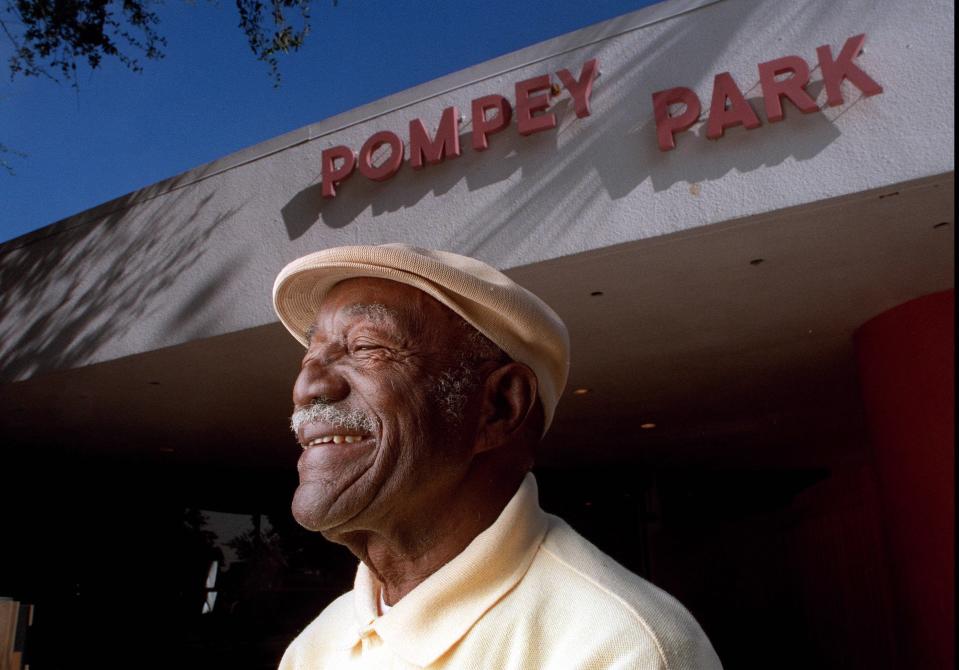
Spady has a museum and an elementary school named after him, while C. Spencer Pompey has a Delray Beach Park. He was one of three teachers who sued the school board for a $25-per-month difference in salaries of white and Black teachers.
William M. Holland Sr. has the school district’s administrative site named after him. The county’s first Black attorney, he sued after he was prohibited from enrolling his 6-year-old son in a white West Palm Beach school. He went on to integrate golf courses, department stores, restaurants, restrooms and more.
Another archivist is Annie Ruth Nelson of the African American Research Library. She is also a Roosevelt graduate and inherited much of her collection from the late Ineria Hudnell, known as the foremost historian of Black history in West Palm Beach and whose collection is destined for the renovated Roosevelt High campus southeast of Lake Mangonia.
From the archives: For more than 30 years, Ineria Hudnell, 91, has documented black history in Palm Beach County
More: An inspired group has a plan to transform West Palm's historic Roosevelt High
“No, there is no building for the African American Research Library. However, we've been in existence for about 15 years to be exact,” she said. “We’ve been somewhat a traveling exhibit.”
Nelson said it hasn’t been easy for Black history to find a home, mentioning how the Pleasant City Heritage Gallery that honored the city’s oldest Black neighborhood was lost to foreclosure in 2013. Pleasant City’s original settlers came from the Styx, the squatters’ neighborhood on Palm Beach.
The African American Research Library is often requested to bring in exhibits by organizations and businesses. Part of the exhibit is dedicated to Roosevelt High and the success of its sports teams — especially its undefeated 1967-'68 state championship basketball team.
The prospect of finding a permanent place for Palm Beach Black history at a new Roosevelt High is a dream come true for Nelson.
“I'm just ecstatic about it. I just can't wait to see it happen,” she said. “I've lived here practically all of my life. And I just recently turned 80 years old. And I'm waiting.”
Palm Beach County History Museum
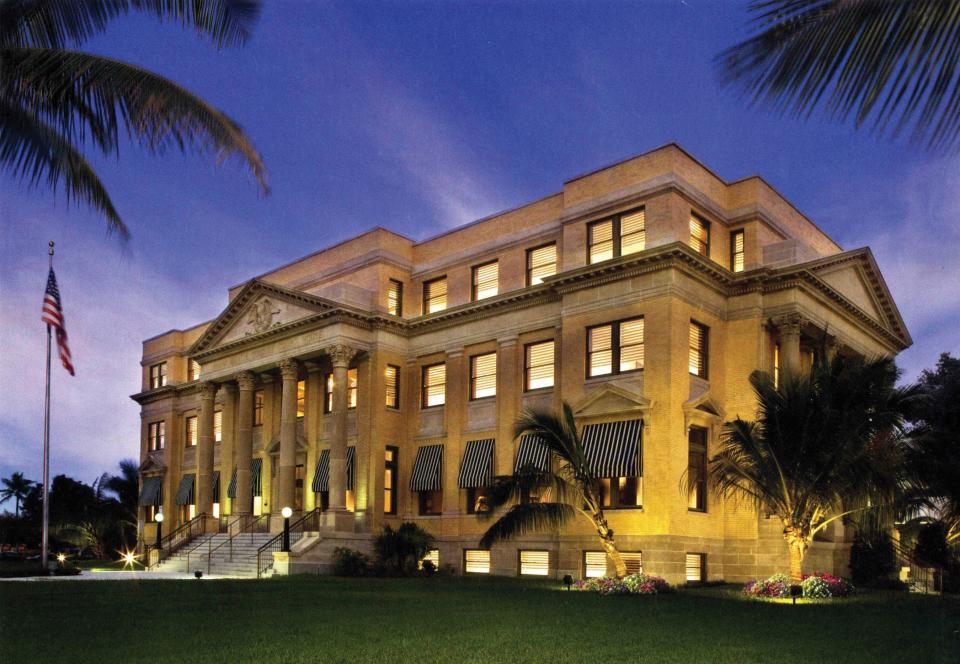
One of the more impressive collections of Black history can be found at the Palm Beach County History Museum —purposely threaded through the exhibits at the historic courthouse building in downtown West Palm Beach.
There were those in the Black community who wanted a separate dedicated wall to the accomplishments of Black pioneers and leaders of today when the museum was established.
“My response to them was I don't want one wall. I don't want segregated history, I want all of the history,” Murray, the Historical Society curator, said.
A visit to the museum will find an exhibit on early medical care in the county and how one of the first hospitals, Pine Ridge, was dedicated to Black care during segregation. The museum puts focus on early Black medical practitioners and community leaders such as Dr. Roy Oscar Cooley, midwife Millie Gildersleeve, and dentists John Henry Terrell and Warren Hale Collie.
Black History Month: The secret story behind Norton Museum’s beloved painting
Another exhibit showing slides of area pioneers is full of Black accomplishments over the last century: Thomas Peppers and Cracker Johnson — both Black businessmen at the turn of the 20th century — Eva Mack, first Black mayor of West Palm Beach, Judge Edward Rogers, the area’s first Black prosecutor.
Upstairs in the main courtroom, is an impressive exhibit of Black women in law created by the Sheree Davis Cunningham Black Women Lawyers Association.
Murray said despite efforts, a big part of Black history in Palm Beach County remains unseen and in the hands of those hoping for a dedicated museum at Roosevelt. Still, there is ongoing work. On this day, museum coordinator Kalani LeBlanc was going through photos dedicated to the Black experience in Riviera Beach in the 1970s.
Much of the history is found not in an exhibit but in Murray, a white woman who wrote her dissertation on the history of the Palm Beach Police Department.
She knows every detail of the lynching of Henry Simmons, who was pulled out of his bed on the day a Palm Beach police officer died after being shot by sea turtle poachers. Simmons had nothing to do with the poachers or the lawman’s death.
“This is June 1923, middle of the night, everybody knew everybody. All the tourists are gone,” Murray sets the scene. She then mentions how the county’s first sheriff, George Baker, had direct ties to the local Ku Klux Klan chapter.
Scattered pieces of history

Another piece of Black history can be found at the Lawrence E. Will Museum in Belle Glade, which tells the joyful story of how local resident Sara Lee Creech created a doll to be mass marketed in 1951 — but not just any baby doll.
“It was the first Black baby doll for children and it was created right here by a Belle Glade woman. So it is a big deal,” said Cheryl Stein, curator for the Will Museum.
The museum also remembers the horrific losses of the storm of 1928, a 160-mph hurricane that destroyed the mud dike around Lake Okeechobee, killing thousands of non-white farm workers.
Approximately 674 Black victims were buried in a West Palm Beach mass grave at 25th Street and Tamarind Avenue in the city’s pauper burial field, where it was not recognized until 1991. Today, the solemn site is fenced off and contains historical markers.
Historical markers commemorating Black history can be found throughout the county.
There is one at Jupiter’s Cinquez Park to commemorate one of the oldest Black communities on record. There is one for Industrial High School and at Evergreen Cemetery, the burial place for some of the most prominent Black leaders of the area, including Dr. T. Leroy Jefferson, the county’s first Black physician. There is one to commemorate Delray Beach’s first Black neighborhood.
There is also the Dr. Martin Luther King Jr. Memorial with its cascading water and granite wall located in Currie Park in West Palm Beach. The monument is on the Florida Black Heritage Trail.
And, of course, the resource that so many hold in the palm of their hands: Google. Numerous repositories of local Black history can be found online.
These include Jupiterlighthouse.org, which has a page on its website dedicated to “Black Jupiter the untold stories” about the Limestone Creek pioneers, runaway slaves that found refuge in Spanish Florida. They joined with the Seminoles and fought the U.S. Army at the headwaters of the Loxahatchee in 1838.
The Palm Beach County Rememberance Community Project aims to educate the public on the lynchings with information on each and locations of historical markers.
Palm Beach County History Online, the arm of the Historical Museum, also has profiles on Black pioneers and leaders and archival information on settlements such as the Styx.
Palmbeaches.org has information on Black historical landmarks and events for Black History Month, among other information.
There are also books, including "Pioneers in Paradise: West Palm Beach, the First 100 Years," written by former Palm Beach Post staffers Jan Tuckwood and Eliott Kleinberg.
The most comprehensive book on Black history in Palm Beach County is a 1982 project out of what was then Palm Beach Junior College called "Like a Mighty Banyan: Contributions of Black People to the History of Palm Beach County." It is available online.
Farrington said "Mighty Banyan" was the first effort to really pull together Black history in Palm Beach County. The book starts with a chapter on education, moving on to politics, social life and other topics.
It is a humbling task to attempt to summarize in one article the contributions of Black Americans in Palm Beach County. Yet, this month, Black history in Florida won’t just be commemorated, it most likely will be debated, mischaracterized and used to make political points — as has occurred in the national media after the cancellation of the AP Black History course.
And while it may seem that there is once again an effort afoot to erase Black history, Debbye Raing knows how her community has triumphed repeatedly in face of adversity.
Or as she puts it, “There is always a way to teach history.”
This article originally appeared on Palm Beach Post: Struggles and triumphs of telling Black history in Palm Beach County

